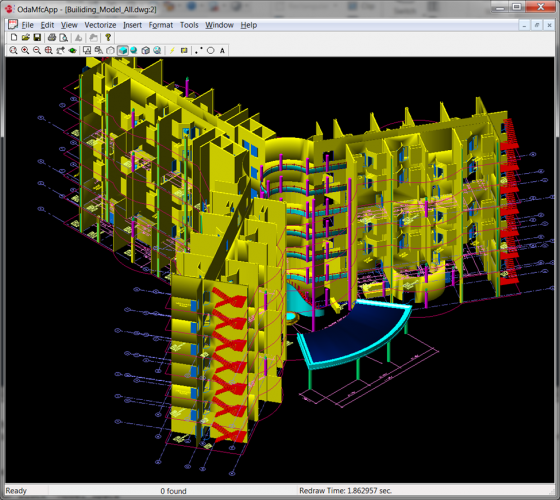The update also adds support for the Autodesk ReCap .rcp format. We review why the ODA is important to the CAD marketplace.
The latest update to the Teigha CAD development platform adds support for the changes in the .dwg file format introduced by the latest version of Autodesk AutoCAD. Teigha 4.3 is now available as a beta release, allowing companies that use Teigha as a development platform to become familiar with the changes. The Open Design Alliance (ODA) says a full development release of Teigha 4.3 will be available August 2017.
The update also adds compatibility with the .rcp file format used by Autodesk Recap, a program for creating and editing point cloud data for engineering and construction.

What do we think?
Now that the blood feud between Autodesk and the Open Design Alliance has become just one more chapter in the history of CAD, it is a good time to offer a reminder on why the ODA continues to exist and the ongoing value it brings to the engineering software industry.
.dwg is an industry standard, the same way .doc/.docx or PDF are industry standards. Virtually every 2D and 3D CAD program on the market must offer compatibility with .dwg, the way Google Docs or Zoho Write or Word Perfect (yes, that is still a thing) must offer .docx and PDF compatibility. With such ubiquity in the marketplace comes responsibility. Users require flexibility in how they create, use, and archive their engineering data. Such flexibility comes from an open playing field where there are a variety of tools for using .dwg data. Such need for flexibility goes beyond what CAD program you use to create 2D drawings. Spatial data giant Esri owns the lion’s share of the GIS market, but still collaborates with Teigha-based developer Graebert Gmbh to create Ares Map, a program that uses both Esri ArcGIS and .dwg data.
2D engineering design is not going away; in fact there are signs it is as important as ever if you look at the entire 2D CAD marketplace and not just the sales of AutoCAD (which have been in decline for a while). Companies like Bricsys and Graebert are growing rapidly. Bricsys now is the center of a vibrant third-party development network with more than 1,000 members creating niche products for every discipline that uses 2D CAD. As the behind-the-scenes developer for such products as Dassault Systemès DraftSight and Corel CAD, Graebert GmbH owns the #2 position in CAD for 2D or 3D (in total seats, not revenue); AutoCAD being in the #1 spot.
The number of .dwg-compatible products continues to grow due to the availability of the Teigha platform. The ODA went beyond being a reverse-engineering clone maker years ago; Teigha code now supports read/write in Revit, provides versioning, and can be used to create cloud-based apps — all things CAD developers cannot get from Autodesk at any price. The future of 2D CAD based on the .dwg file format is promising not because Autodesk is the progenitor, but because the existence of the ODA makes it a smart choice for continued development.
Small CAD developers today turn to the ODA for support for important reasons:
Cost: There are two ways to support .dwg files: Use Autodesk’s third-party developer support, or use ODA. Autodesk is a commercial entity, its support is much more expensive than ODA Teigha (a member’s cooperative). And the cost doesn’t end with the vendor; products created by authorized Autodesk developers must buy Autodesk products, which always cost more than similar tools from ODA members.
Flexibility: As stated above, only Teigha provides developers with an opportunity to create products that can be cloud-based or work as a mobile app. The ODA works for its members, and can more quickly respond to customer requests for new technology than Autodesk can with AutoCAD, given its 3+ years of legacy code and often-stated desire to see all its users “move up” to 3D tools.
Access: Teigha developers have complete access to the source code; members of the ODA also contribute to the continued development of the Teigha platform. From my years of observation, I estimate approximately 30% of Teigha code actually came from members, not from the ODA’s own development team.
All of this adds up to a marketplace that is better served by choice than by exclusive reliance on one vendor.





